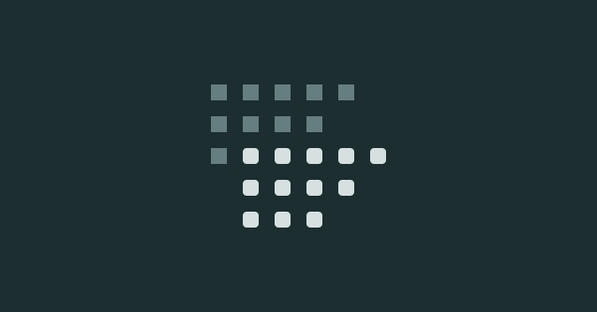Change is an unavoidable aspect of digital experiences, and headless websites are at the forefront of this evolution. They offer unmatched flexibility, speed, and scalability—advantages that traditional, monolithic websites struggle to provide. This article will explain what a headless website is, explore its benefits, provide examples, and guide you on starting your headless journey.
What is a headless website?
A headless website is a real-life example of headless architecture, which decouples a system's frontend and backend layers. This separation allows for faster page loads, easy updates on the presentation layer, and greater business flexibility.
Managers of headless websites use headless CMS (Content Management System) to add, test, update, and distribute content on multiple presentation layers without a developer’s help.
Although widely spread throughout the ecommerce industry, a headless website can be successfully applied to different websites.
Headless website and headless CMS
In a headless setup, the frontend and backend operate independently, allowing for greater flexibility and enhanced performance. The content management and presentation layers function separately, so updates to the frontend won’t affect the backend, and vice versa. A Headless Content Management System is specifically designed to manage content independently from the presentation layer, delivering it seamlessly across various digital channels via APIs.
Understanding Headless CMS
A Headless CMS is a backend-only system that enables content creation, management, and storage without a built-in presentation layer. This separation empowers developers to use their preferred frontend tools and frameworks, ensuring a custom and optimized user experience. Content stored in a Headless CMS is accessible through APIs, allowing seamless distribution across diverse channels. By decoupling the content and presentation layers, businesses gain the flexibility to adapt quickly, improve performance, and reach users wherever they are.
Traditional CMS vs Headless CMS
Aspect | Traditional CMS | Headless CMS |
Structure | Integrated backend and frontend | Decoupled frontend and backend |
Flexibility | Limited frontend flexibility | Highly flexible frontend customization |
Deployment | One channel (usually web) | Multiple channels (web, mobile, etc.) |
Performance | Slower due to integration | Faster as frontend/backend operates independently |
Developer Requirements | Basic web development skills | Advanced API and frontend development skills |
Advantages of Going Headless
Going headless- compared to traditional monolithic CMS systems- comes with various benefits that can transform your website's performance and adapt to changing needs. These advantages are:
- Flexibility and Customization
Decoupling frontend and backend allows for greater flexibility, enabling businesses to create highly customized and responsive user experiences without backend constraints. This flexibility is ideal for delivering unique brand experiences tailored to specific customer needs.
- Omnichannel Delivery and Content Reach
A headless setup allows for seamless content delivery across multiple platforms, from web and mobile to IoT and other digital channels. This means businesses can engage customers wherever they are, ensuring consistent messaging and user experience across devices.
- Enhanced Performance
Separating the frontend from the backend enables faster page load times, as each layer is optimized independently. This significantly improves user experience, with quicker navigation and reduced wait times, resulting in higher engagement and lower bounce rates.
- Scalability and Adaptability
A decoupled architecture supports growth, allowing businesses to expand their backend infrastructure, add new services, or integrate third-party applications without impacting the user interface. This adaptability ensures the platform evolves with business demands without disrupting the customer experience.
- Improved Security and Stability
By limiting the direct connection between frontend and backend, headless architecture reduces the risk of security vulnerabilities, providing a more secure environment. This separation also enhances stability, as changes in one layer are less likely to disrupt the other, ensuring a more reliable and safe platform.
Headless websites vs. headless commerce: Understanding the difference
Headless websites are widely implemented within the eCommerce industry, which quickly adapted the new approach of building online stores to gain more flexibility, better web performance, and freedom to scale. This approach to building online stores with headless architecture is known as headless commerce.
However, the use of headless websites extends beyond ecommerce and can benefit a wide range of other industries.
Examples of headless websites
Many businesses in a number of industries have witnessed significant improvements in site performance after ditching all-in-one software and opting for a headless website. eCommerce websites are the most common but not the only group of examples.
Alokai
At Alokai, we build Frontend as a Service for composable commerce, which helps deliver custom frontend at a fraction of the cost and time. At the same time, we practice what we preach, embarking on the headless journey with our website.
We decided to ditch a traditional CMS and build a headless website with the help of our Growth Partner, Contentstack, one of the top headless CMS providers. Our main goal was to implement a business-oriented CMS with broad functionality. As Contentstack offers advanced support and extended customization options for developers on the frontend, this seemed like the right fit.
If you want to learn more about our headless journey, subscribe to our newsletter to get notified as soon as the case study is published.
Berlin Brands Group (BBG)
Berlin Brands Group (BBG) is a D2C industry pioneer establishing, growing, purchasing, and scaling brands for over 17 years. The company sells over 4,800 goods to customers in 28 countries, which requires enormous flexibility and unlimited scaling.
BBG needed a lightning-fast interface with limitless integration options for composable commerce. Alokai provided exactly that frontend. Working with a Frontend as a Service enabled the organization to decompose the monolith and become independent of vendor-specific integrations.
Winkelstraat.nl
Winkelstraat.nl is the largest luxury fashion marketplace and community in the Netherlands. It brings together over 300 shops and companies from around Western Europe under one roof to bring them closer to Millenial and Gen-Z audiences.
The company focused on decreasing its reliance on Magento by using a separate frontend solution. They opted for composable commerce and aimed to obtain higher performance and flexibility while ensuring a shorter Time-to-Market.
Winkelstraat.nl chose Alokai because of its ability to reduce Time-to-Market, supply them with the necessary flexibility, and provide a comprehensive toolbox for scalable frontend architecture.
LoveCrafts
LoveCrafts had to find a successor for their commerce platform after Magento 1 support ended. The company saw that a decoupled architecture solved their need for flexibility and scalability across multiple channels.
LoveCrafts recognized from the start that they would need to select the perfect frontend. The primary requirement was that it should be as lightweight as possible to empower omnichannel strategy and increase performance.
There was simply no other frontend solution than Alokai that offered the flexibility that LoveCrafts required.
Read the full LoveCrafts case study
Other examples:
Netflix was one of the first global companies to embrace headless architecture. The reason for that was tightly coupled components within the monolithic app, prone to cause several days of downtime in case of even the tiniest error.
Amazon is another example of a company that decoupled the system's frontend and backend layers. Long deployment times and difficulties in adding new features slowed the company’s growth. This was a powerful blocker, given the scale of operations on Amazon’s website.
For Uber, a monolithic application was just fine at the time when the company was a local business. However, it became a significant obstacle as the business scaled to international markets. Separating the frontend and backend allowed the company to grow smoothly.
Key components of a headless website
Frontend
Frontend is the presentation layer of your website. It presents data stored in the backend and displays it in an organized way to the user.
Your frontend technology directly influences the digital experiences of your website visitors. Page speed, UX, customer experience , conversion – it all happens on the frontend. Because of this, you need a fast and mobile-first presentation layer that ticks all the boxes.
A proper frontend technology should be a progressive tech ecosystem that binds all headless components with API. It’s a “head” for the entire headless web development project. You can build your custom frontend from scratch or use pre-built and pre-optimized frontend architecture known as Frontend as a Service .
Headless CMS
A headless CMS (Content Management System) allows the storage and organization of content separately from the website’s presentation layer. It can be described as a digital repository for blog posts, images, and videos that is a backend system for content management.
Headless CMS delivers an interface for editors responsible for managing the content. On the developers’ side, it enables the delivery of content to multiple channels and devices via a RESTful API or GraphQL API, allowing users to choose the best frontend tooling.
Examples of headless CMS include Bloomreach, Contentstack, Contentful, Storyblok, and more.
API
API (Application Programming Interface) is a software intermediary that allows independent applications to communicate smoothly. In the case of a headless website, API connects frontend and headless CMS to provide content to multiple channels. In the case of headless commerce, API would connect all headless solutions, including an ecommerce platform and other 3rd party tools like Search or Payment.
API is standardized across all the technologies and connects them quickly and flexibly. As a vital component of future-proof enterprise technology, it propels current and future digital experiences.
Alokai out-of-the-box integrations with leading headless CMS providers include ready API connection between two parties, so there is no need for customers to allocate additional resources for building it from scratch.
Cloud hosting
Fast, scalable, and secure infrastructure is crucial in a successful headless setup.
Hosting response time directly influences your website's performance. This is why a reliable, performance-oriented cloud with 24/7 support and high uptime should be your priority.
How to start building a headless website
The frontend is an essential part of your online business, where the customer journey happens. Therefore, you need a lightning-fast and mobile-optimized presentation layer to build and control first-class customer experiences. To ensure that, you must start headless web development with the frontend, opting for Frontend as a Service.
Frontend as a Service provides enterprises with a one-stop shop solution for building and launching performant storefronts in one location using a single tool. It offers customers a Microservices-based, API-first, Cloud-native and Headless (aka MACH) composable frontend environment.
When to choose headless architecture for your ecommerce platform
Headless architecture is an excellent choice for ecommerce platforms that demand omnichannel content delivery, advanced customization, and agility. Headless architecture provides significant advantages if your business prioritizes speed, user experience, and the flexibility to adapt quickly to market changes. With a decoupled setup, headless systems enable faster load times and a more responsive, mobile-friendly user experience, which is crucial in today’s competitive market. This approach benefits brands with complex operational needs, such as global scalability, multilingual support, or integration with numerous third-party applications.
Additionally, it supports seamless updates and easier testing, making it ideal for companies that frequently iterate on customer-facing features. If you’re looking to future-proof your platform with technology that can evolve alongside your business, headless architecture may be the right choice.
Start your headless journey with Alokai
Alokai is a Frontend as a Service (FEaaS) that enables unlimited customization and easy connection between your services to unlock much faster frontend development.
Unlike custom frontend developments and low-code solutions, you can get the best of both worlds. Alokai helps to drastically cut down on development time and costs while providing the same level of customization and code ownership as custom-made frontend thanks to its out-of-the-box integrations and customizable frontend boilerplate components.
Alokai provides value throughout the whole lifecycle of your headless project: from design and development to global scaling.



















